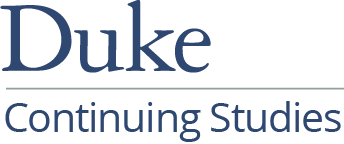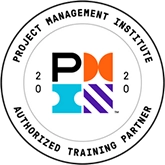Performance Management Myths and Facts
Myth: Performance is the sole responsibility of management.
 Fact: The most successful individuals take responsibility for their own growth and manage their own performance. After all, most people no longer work for one company or one department for their entire lives. Individuals are usually the only ones with intimate understanding of their career goals, progress, and learning. It makes sense that people should be accountable for their performance.
Fact: The most successful individuals take responsibility for their own growth and manage their own performance. After all, most people no longer work for one company or one department for their entire lives. Individuals are usually the only ones with intimate understanding of their career goals, progress, and learning. It makes sense that people should be accountable for their performance.
That said, often people can’t see themselves objectively. Managers help by providing direction and feedback throughout the year. At the same time, people receive performance feedback from customers, peers, and partners. The most successful performance management systems involve and take into account all perspectives: those from managers, performers, customers, peers, and partners.
Myth: It’s important to lock in goals at the beginning of the year and hold people accountable for them.
Fact: Adaptability is a new part of the performance management process. For years, companies were satisfied with identifying goals at the beginning of the year and then reviewing them at year end. The world has evolved. It’s likely for markets to shift, new competitors to emerge, and priorities to change during the course of a year. Adaptability is important in this world. Performance management systems must have the flexibility and adaptability to evolve along with changing circumstances.
That said, new goals needn’t be written every month. Instead, organizations strong in performance management identify overarching strategic priorities that remain in place while supporting goals and activities adjust. These strategic priorities create consistency amidst chaos and provide a beacon for employees to follow even as they adapt their individual priorities to fit the environment.
Myth: Performance management works best when it focuses solely on the individual.
Fact: Ideally, individual contributors should be able to trace their own goals to department goals to division goals and up to corporate goals. The best performance management systems link individual and organizational goals clearly. These cascading goal systems help ensure that the organization is entirely aligned and focused on its overarching strategies and priorities.
Myth: Performance management happens when setting goals at the beginning of the year and when reviewing performance at the end of the year.
Fact: Performance management works most successfully when it is integrated into daily work. The best performance managers solicit, give, and receive feedback constantly. After all, if people aren’t doing what they need to do, isn’t it better that they find out quickly so they can change?
Myth: Performance management always focuses on the individual.
Fact: Innovative performance management systems include groups or teams by creating goals that require staff to collaborate in order to achieve results. Team goals help individuals think more holistically about the needs of the organization and its customers. While team goals can be complex and difficult to achieve, they have the potential to bring much value to an organization.
Myth: Performance management is primarily an administrative task.
Fact: There’s a portion of performance management that is administrative: logging performance review information into an online tracking system and completing performance review documentation. However, the best companies take performance management way beyond administration. At its most effective, performance management is an ongoing, dynamic interplay between performers, managers, and goals. Performers work to clarify goals, create action plans, and execute. Managers help by letting performers know when they are off track. Goals evolve in response to changing environmental conditions, causing managers and performers to adjust. All three-performers, managers, and goals-evolve throughout the year as people learn what it really takes to achieve corporate objectives.
Myth: High performers are best left alone to achieve their goals without interference.
Fact: High performers need attention. All too often, managers spend their time and energy on their lowest performers. This can be a mistake. High performers are most likely to become stars-and those most likely to be wooed away by competitors. To keep high performers challenged and happy, good managers spend time talking with high performers about their career goals and how the company can help achieve them. They also help high performers grow through stretch goals, mentoring assignments for junior staff, and special projects.
Myth: The best thing to do with low performers is to show them the door.
Fact: While there certainly can be a misfit between performers and organizations, it’s a mistake to jump to the conclusion that low performers no longer fit in the organization. Before making that decision, consider these questions:
- Are the performance problems recent or part of ongoing patterns? If the problems are recent, there may be logical reasons for problems that can be resolved. For example, the performers may lack clarity about expectations. Perhaps they shifted to new positions that don’t capitalize on the performers' strengths. Or there could be process bottlenecks getting in the way of success. Taking the time to investigate the problems can help save the time, energy, and cost of releasing employees that could become a high performer.
- Are the performers willing to learn and change? If the performers are willing to hear feedback and improve, chances are that it is worth helping them. Positive attitudes and willingness to learn are invaluable. If low performers have these qualities, they probably can overcome their performance issues.
Myth: Performance management is easy.
Fact: Performance management is a skill that takes time to build and refine. There are many resources out there to help build performance management skills: books, training courses, association events, and company advisors such as HR staff and senior managers.
About the Author:
Maya Townsend, MSOD, is a Trainer and Consultant for Corporate Education Group. Maya is also Founder and Lead Consultant for Partnering Resources, where she specializes in leadership, strategy and collaboration. During her career, Maya has successfully designed and facilitated training programs to over 5000 people in groups of 3 to 130 in the public and corporate sectors. Highly intuitive, analytical, and imaginative, Maya works at all levels, from CEOs to line workers, to develop the relationships, ideas, connections, and interdependencies that shift an organization to the next level of productivity and performance.
For more information on this topic, as well as how Corporate Education Group can help power your organization’s performance, contact us via email or call 1.800.288.7246 (US only) or +1.978.649.8200. You can also use our Information Request Form!


